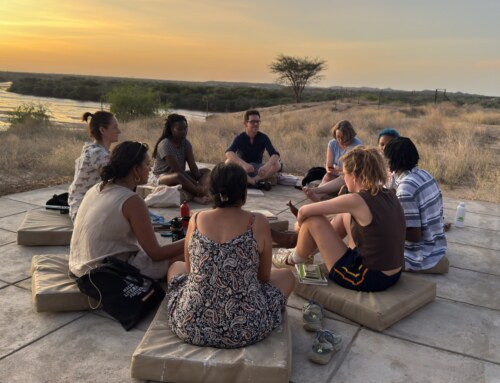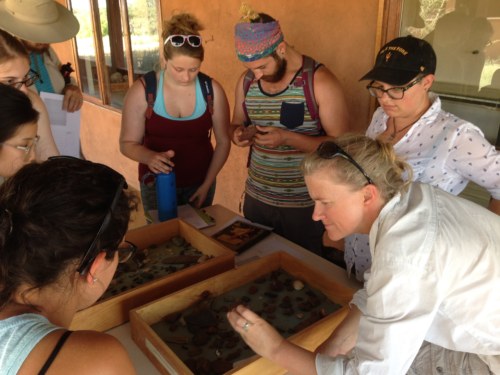
(Counterclockwise from bottom left) Petra, Sheng, Karolina, Nathan, Kelly, Ian, and TA Evelyn watch as Dr. Lisa Hildebrand discusses how to recognize stone tools.
This week our students have started their second module ‘Archeological Methods’, taught by Dr. Lisa Hildebrand. The first three days were spent bringing the students up to speed on basic excavation methods, as well as giving them a specific introduction to the site and its significance that we will be excavating the coming 9 days.
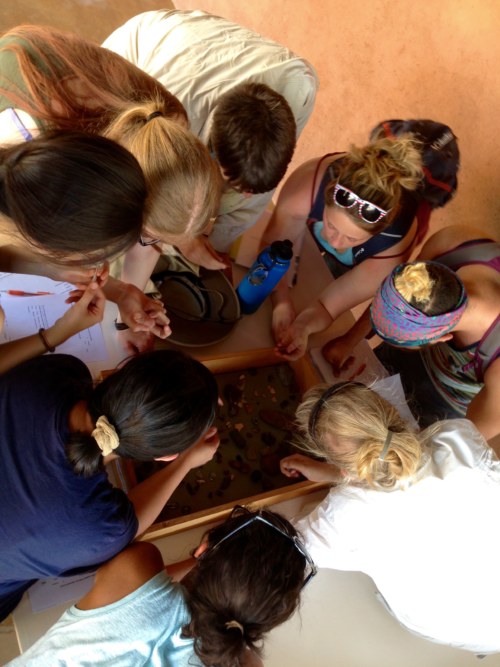
(Clockwise from bottom left) Petra, Adrianne, Sheng, Karolina, Nathan, Kelly, Ian, and Dr. Hildebrand lean in for a closer look!
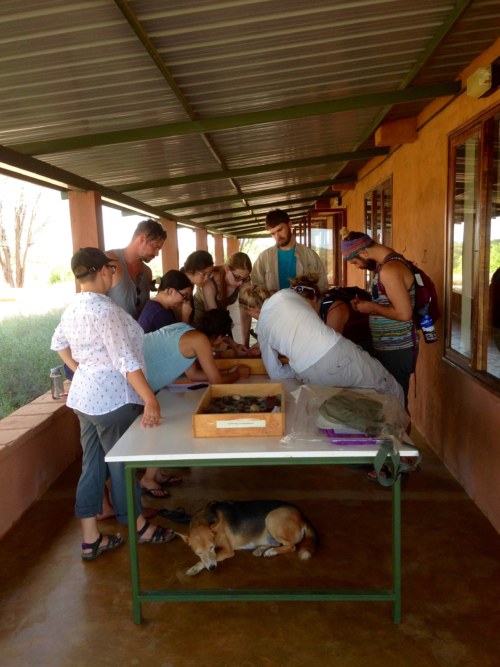
The students look closely at examples of stone tool artifacts, as Tom lounges under the table.
On the first day, Dr. Hildebrand started out with a general introduction to archeology; its goals and its practices. This was followed by a more hands-on demonstration of some artifacts found locally. We looked at stone tools (the real artifacts) and naturally weathered and chipped stones that might look like stone tools, but are in fact ‘geofacts’. After this useful introduction, the students conducted their own ‘surveys’ (looking for archeological sites) on campus. There are a lot of stone tools (as well as the misleading geofacts!) that can be found on TBI campus; you just have to know how to look for them!
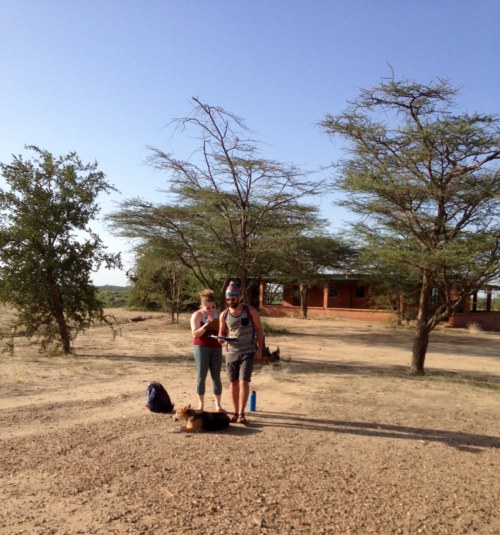
Kelly (left) and Ian (right) survey for artifacts while Tom (below) stands guard
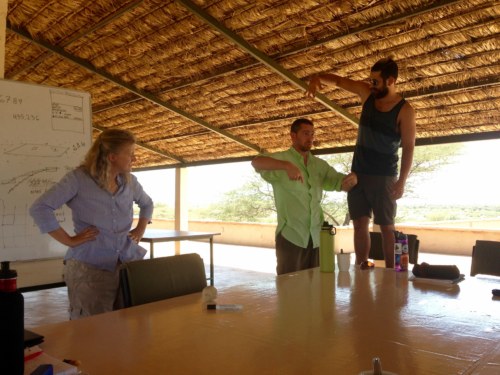
Ian (right) helps Dr. Lewis (middle) demonstrate the proper etiquette for using field showers to conserve water as Dr. Hildebrand (left) watches approvingly
The second day of classes was spent on an introduction to Holocene (the most recent 10,000 years) African archeology. The students were introduced to important sites in Africa, and were chronologically walked through the prehistory and significant climatic changes of the Turkana region. We spent some time learning about the spread and occurrence of certain types of artifacts (pottery, bone harpoons), as well as the differences in the spread of pottery, pastoralism, and agriculture in Africa compared to the rest of the world. Whereas in other parts of the world (specifically Mesopotamia, or the near East) cultivation of crop preceded the invention of pottery, in Africa it is pottery that occurs before signs of agriculture appear in the archeological record – an intriguing difference! The Holocene is a fascinating time-period in human prehistory, and the site that the students will be excavating with Dr. Hildebrand has already yielded many interesting finds in relation to these bigger debates. In the afternoon, we learned about the importance of being able to identify different types of sediments, as these become crucial tools for archeologists to ‘read’ the site and to recognize separate sediment layers while they are excavating.
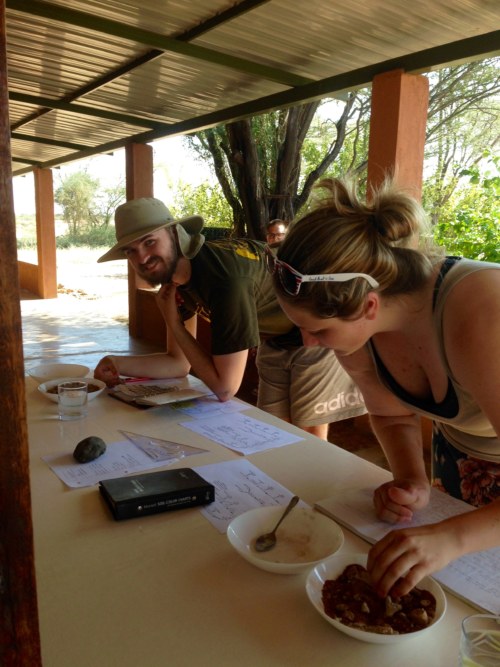
Nathan (left) and Kelly take a quiz on classifying sediments
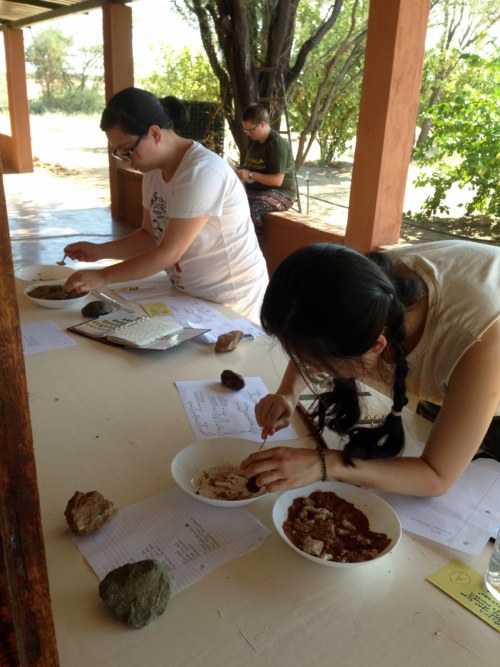
Adrianne (left) and Sheng are very focused on their sediment exam
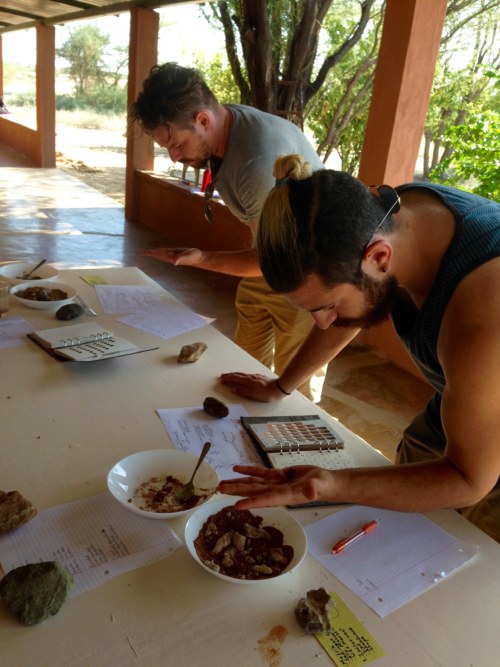
Ian (right) uses a Munsell color chart to determine the color of his sediment, while Morgan works hard at his own station
Yesterday we finished our whirlwind introduction into archeological methods by a going over some excavation procedures we will have to apply the coming days on site (e.g. labeling bags, keeping record of finds, what forms we need to use and when). In the afternoon, the students took a practical test on sediment identification and packed their bags for our coming trip. The next 9 days the students have the privilege to work on a real excavation, which will give them the opportunity to apply everything they’ve learned the last 3 days in practice! Even though we’re only about an hour away from TBI campus, we won’t have internet access during the excavation. This means that once we’re back on campus, we will update you on everything that happened during the excavation in our next blog post!

